Mia Goth Redefines "Naked Dressing" in a Haunting 'Frankenstein' Nightgown
Costume designer Kate Hawley breaks down the film’s unique take on an iconic horror motif.
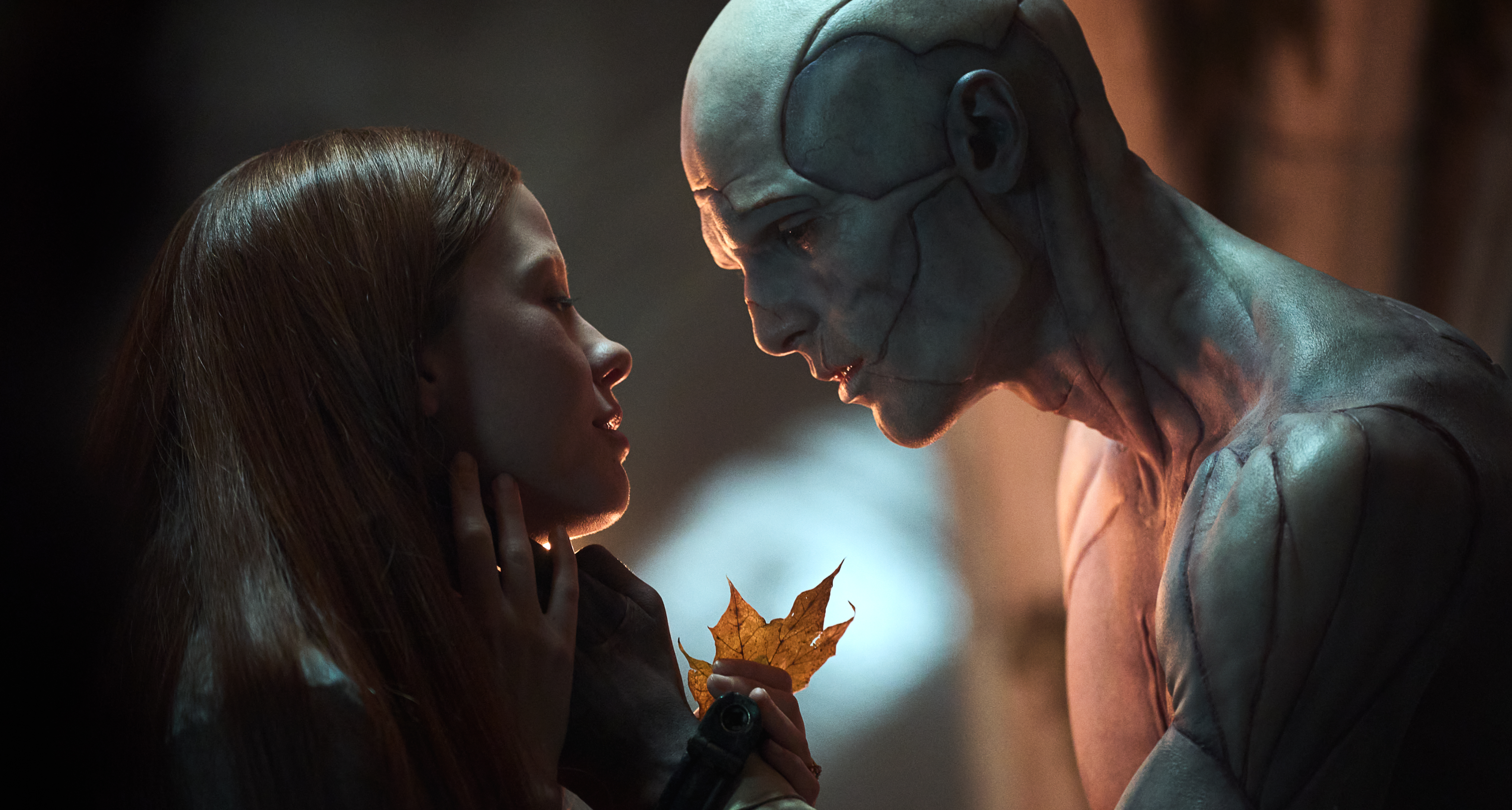
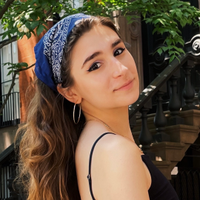
While Guillermo del Toro’s Frankenstein is a faithful adaptation of Mary Shelley’s classic text, it brings its own point of view to the Gothic-Victorian era. The film, which hit Netflix on November 7, is a feast for the eyes: with a jewel-tone palette that’s a far cry from the morose hues we’ve come to associate with the horror story; an ornate production design; and a unique vision of The Creature (played by Jacob Elordi).
But its most enchanting goth girl moment may be del Toro’s integration of a beloved genre motif: a woman descending a staircase in her nightgown, candelabra in tow. Much like the trope of the desolate yet grandiose estate or the fantasy of paranormal romance, it evokes a certain feeling of the divine feminine and female sexuality.
The scene occurs when Mia Goth’s character, Elizabeth, desperate to see The Creature for herself, sneaks out of her bedroom and into the basement. Her nightgown—teal, sheer, embellished with ruching, and inspired in part by Caravaggio paintings—adds to the movie’s mysticism.
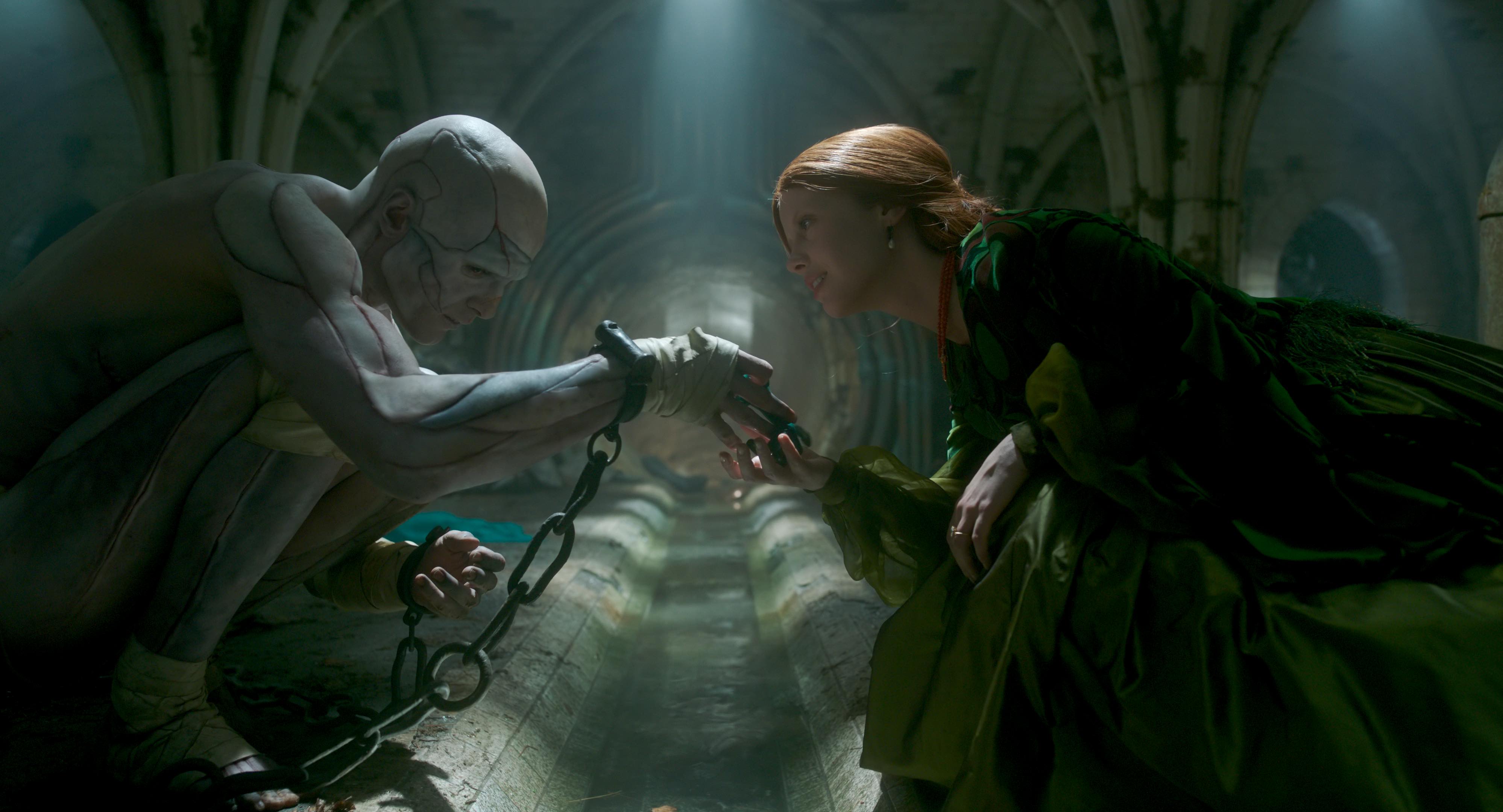
The Creature (Jacob Elordi) and Elizabeth (Mia Goth) have an instant kismet connection.
It was important to costume designer and frequent del Toro collaborator Kate Hawley (Pacific Rim, Crimson Peak) that the look be instantly memorable. She explains to Marie Claire that great consideration went into Elizabeth’s nightgown because it’s meant to be the first time both she and The Creature, each misunderstood in their own way, feel truly seen by another.
Hawley says it wasn’t lost on her or del Toro how much this scene would resonate with young women in particular. “There is that natural want to escape to the land of fairy tale, and it's not something to be sniffed at all. I was brought up on the works of the original Grimms’ Fairy Tales or Angela Carter, and there's a deep sensuality within that.” she says over Zoom. “I think Guillermo really taps into that with women. There's a sort of erotica of horror and the sensuality of it. I think women respond to that, and it's part of their deep oral storytelling. It's our witch.”
Here, Hawley breaks down Elizabeth’s naked dressing nightgown moment, as well as more details behind the fashion in Frankenstein.
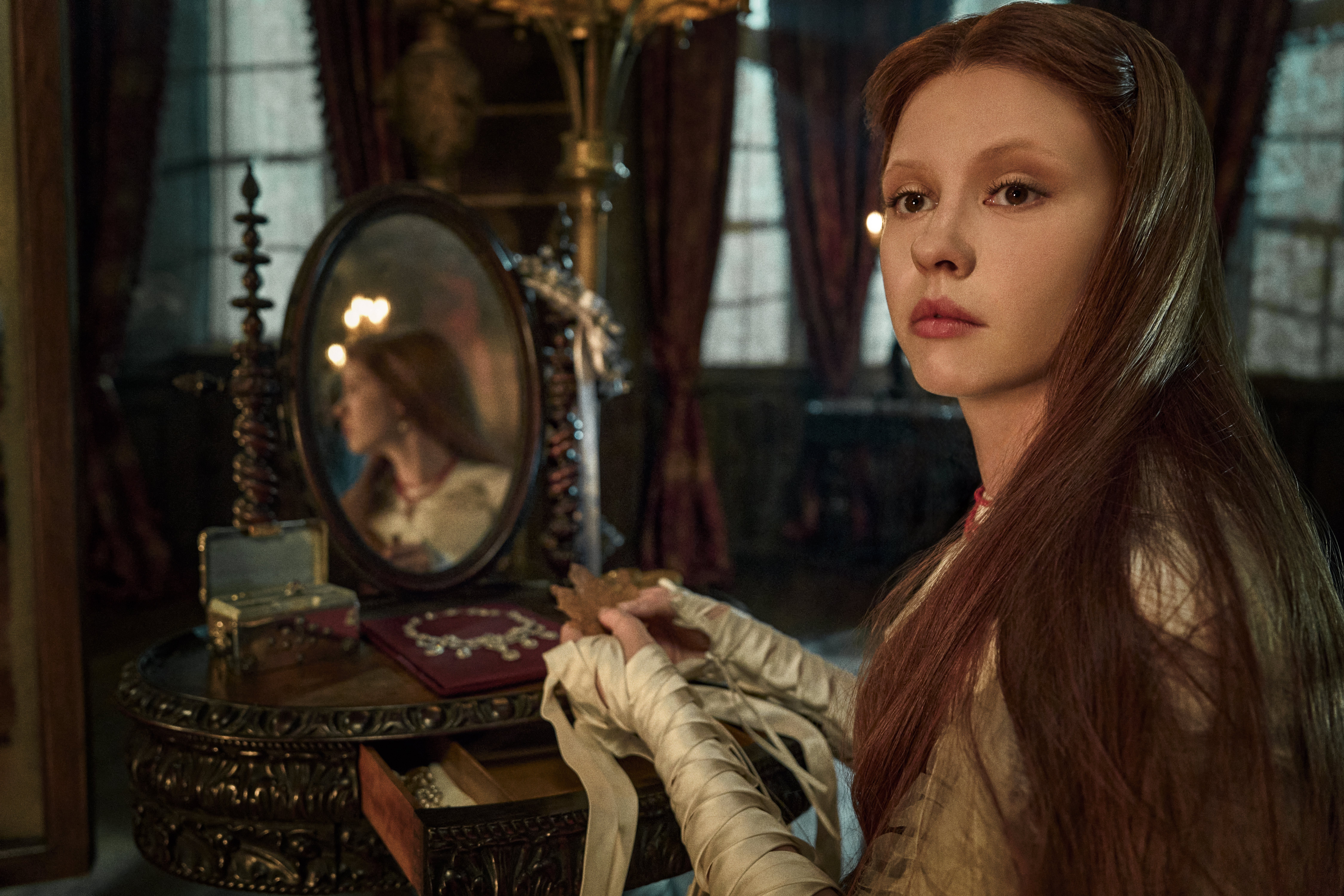
Hawley explains that there are parallels between Elizabeth's wardrobe and the creature, including the rib-cage-like bodice of her wedding dress.
Marie Claire: What did you want to accomplish with Elizabeth’s look in this moment in Frankenstein?
Get exclusive access to fashion and beauty trends, hot-off-the-press celebrity news, and more.
Kate Hawley: Having done nine or so night dresses for Guillermo on Crimson Peak, it was a moment of like, Oh, my God, what do I do? Because we've done this so much, where do I go with it? And the answer came from Guillermo in the end. He said he wanted something really simple. For that moment, it was all about Mia's hair and being in the moment—being almost as close to naked with the creature and as natural as possible—but still luminous because Mia brings all of that.
I did a nod to the Victorian ‘60s. We'd been echoing that world with her color palette. I'd been in the Tiffany archives looking at all the Louis Comfort Tiffany glass. I’d been looking at Biba because we talked about Oscar [Isaac’s character Victor] hitting that ‘60s horror influence, as well. It found itself through all the characters, but particularly that moment. She definitely has that ‘60s horror femme fatale, coming down the staircase. And Mia herself brings so much to the atmosphere. I was worried that we'd overwhelm her, but she's actually got an amazing presence that comes through everything. That woman can just walk in anywhere and take the room.
She definitely has that ‘60s horror femme fatale, coming down the staircase.
MC: It’s interesting because there’s a timelessness about that trope and look.
KH: You can name the films, can't you? Whenever we look at all the references, we look at them, but we don't copy and paste. We put it into the language of our film. [del Toro] likes to work with lots of artists, and he likes to see interpretation in the work. We draw, we explore, we reinterpret. And that's how the costumes evolved.
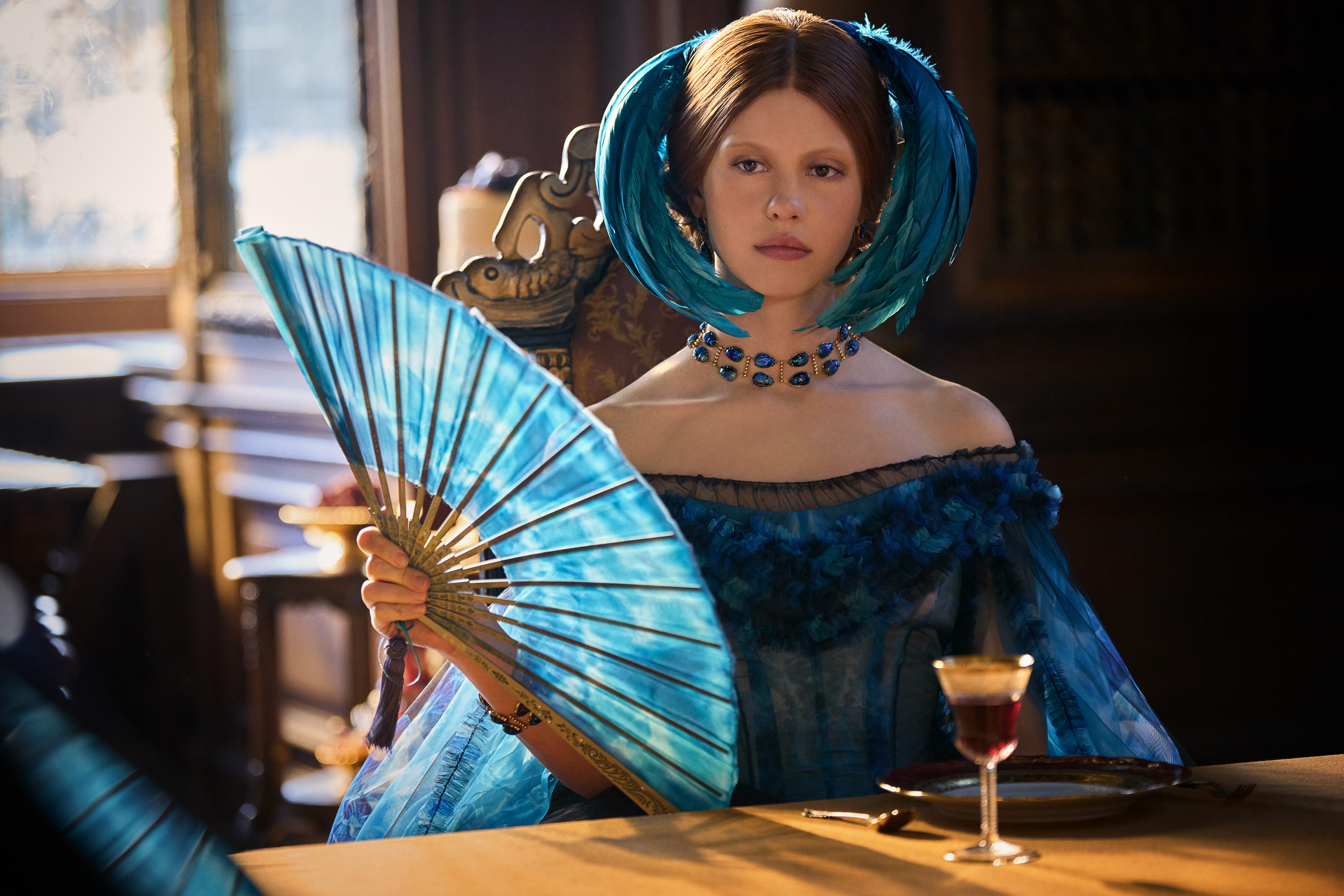
"Mia herself brings so much to the atmosphere...That woman can just walk in anywhere and take the room," Hawley says of the actress.
MC: You said Elizabeth was meant to look as naked as possible. What did you see as the significance of this?
KH: When Victor meets his creature for the first time, it's a narcissistic mirror image of seeing man in his own image. It's all these religious themes, but the way he peels his gloves off to show the creature he's real, then that's echoed when the creature peels [Elizabeth’s] gloves off in the very first time they meet in the cell. So you're aware of how the visual language is developing; Guillermo's always weaving repetition through it all.
MC: Why did you decide to make the nightgown blue?
KH: [del Toro] wants his horror to have color. He didn't want a sea of black. So, the first thing was, How do I make color sing in a way that still is evocative of the atmosphere, which is melancholy and loneliness? And how do we do color that's intense but not flat and bright that still answers the tone? The blues and greens are a really important part of it.
[The nightgown] echoes how we first see her in blue when Victor sees her, where she’s [likened to] Madonna. It was a softer version of that, like moonlight. Elizabeth is always, in Victor's story, seen through his eyes in the more abstract form of mother. When we get to this creature’s story, she's reflecting the creature and his version of the world. So she's all these women: She's Madonna, she's mother, all of these things. They're fleeting images, they’re part of the dream world, they're memories. I love that within Guillermo's script, too, the creature talks about memories and wearing them, or that there are memories within him that he can grasp elements of things. When he puts on a dead man's coat in the forest, it's almost like he's putting on the memory of another man's skin. There are all these images throughout.

"It becomes part of the brush strokes of the landscape. It was trying to find that dreamlike quality—faces blurred so they felt like memories," Hawley says of the sheer fabrics used in the film.
MC: The nighgtown is hardly the only sheer piece. Victor’s mother is always covered in it, Elizabeth frequently wears a veil, and it’s prominently featured in the design in the funeral and wedding scenes. Why was sheer so important?
KH: It helped us get into the more ethereal language that Guillermo wanted. It also helped me translate color in a way that felt more part of the dream world. If I just put lots of flat fabrics in there, it would've had a very different tonal quality, but because we used the veils in terms of color and the fabric we used, it's almost like a more painterly approach, which is very Guillermo. It becomes part of the brush strokes of the landscape. It was trying to find that dreamlike quality—faces blurred so they felt like memories. We were trying to evoke a mood and tone by using color. It layers through—almost a constant metamorphosis of color.
MC: There’s a lot of debate around historical accuracy in period piece costuming. Do you think it’s a challenge or does it allow you to be more playful when you don’t go for 100% accuracy?
KH: First of all, [del Toro] changed the time period from the book [published in 1818] to the 1850s, which made sense for a more modern world. We have the Industrial Revolution in full swing, the Crimean War in the background. And he always said that he wanted a modern edge to the costumes. There's also the tone of gothic, and how do we do that in a Victorian world?
Because we were still defined by the silhouette, that creates one rule that you can accept; some of the details within the period actually help you tell the story. I go deep into research, then I let it go and go deep into the thematics and the dream of the world. And then at some point, those two things meet.
Even if you look back in time, we all invest the past with a kind of grandeur or correctness or rules that it didn't have. Someone in their 50s might still dress as they did in their 30s, or never could never have afforded clothes. There's stories behind everything. Nobody wears a uniform.
This interview has been edited and condensed for clarity.
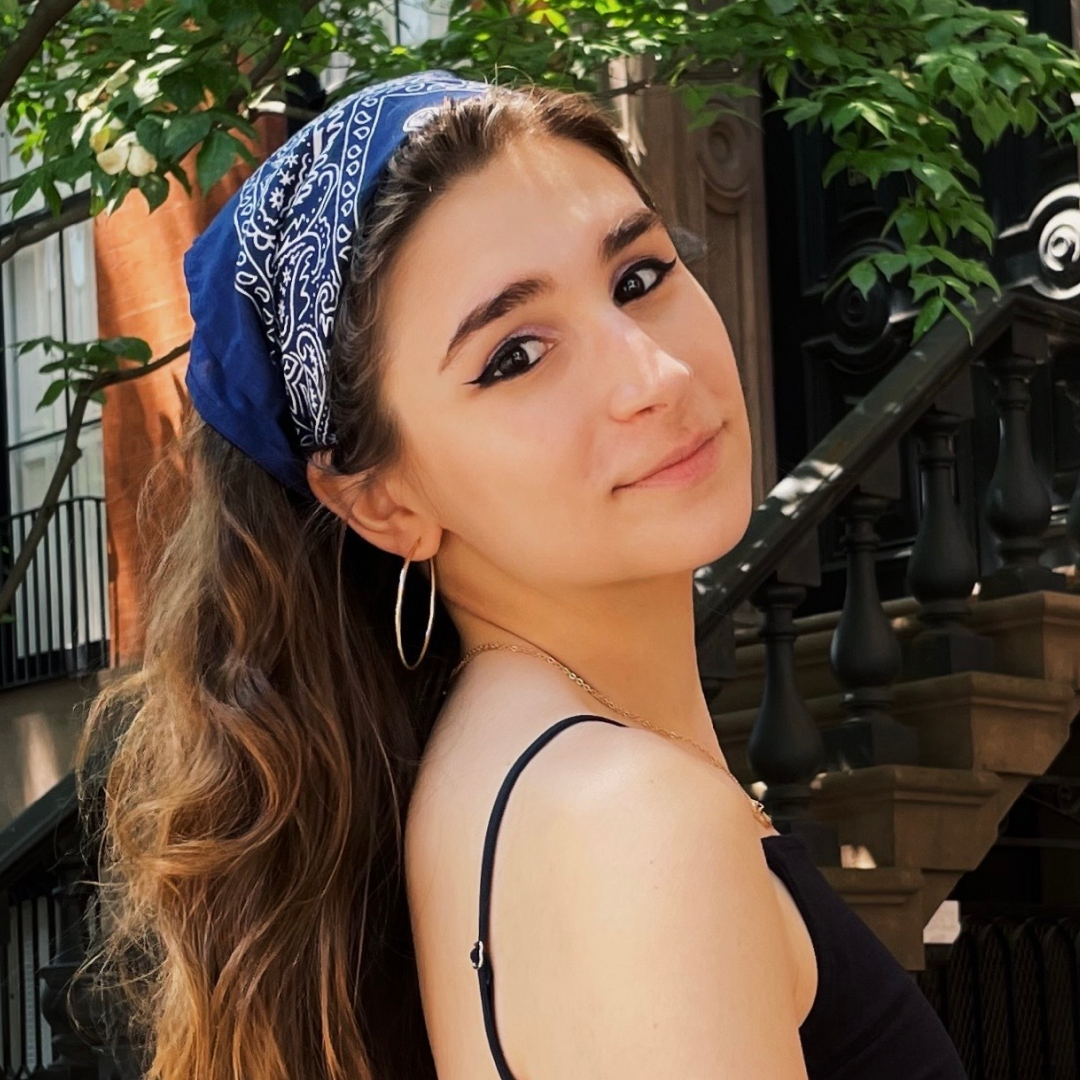
Sadie Bell is the Senior Culture Editor at Marie Claire, where she edits, writes, and helps to ideate stories across movies, TV, books, music, and theater, from interviews with talent to pop culture features and trend stories. She has a passion for uplifting rising stars, and a special interest in cult-classic movies, emerging arts scenes, and music. She has over nine years of experience covering pop culture and her byline has appeared in Billboard, Interview Magazine, NYLON, PEOPLE, Rolling Stone, Thrillist and other outlets.